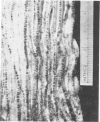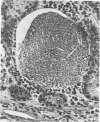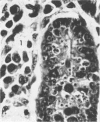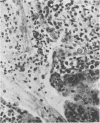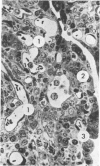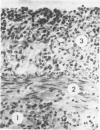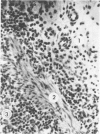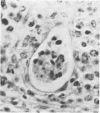Abstract
The pathogenesis of the lesions caused by Eimeria zuernii in calves is described. The gross lesions and the development and resolution of the microscopic lesions of the large intestine are described in detail. The development of the first asexual generation causes few changes in the lower ileum. The second asexual generation and gametogony of E. zuernii appear to be the pathogenic stages of its development. It is during these stages of the life cycle that epithelium is lost, capillaries are exposed and that hemorrhage into the lumen of the large intestine occurs. Resolution of these lesions takes place in approximately ten days in calves which survivie.
Full text
PDF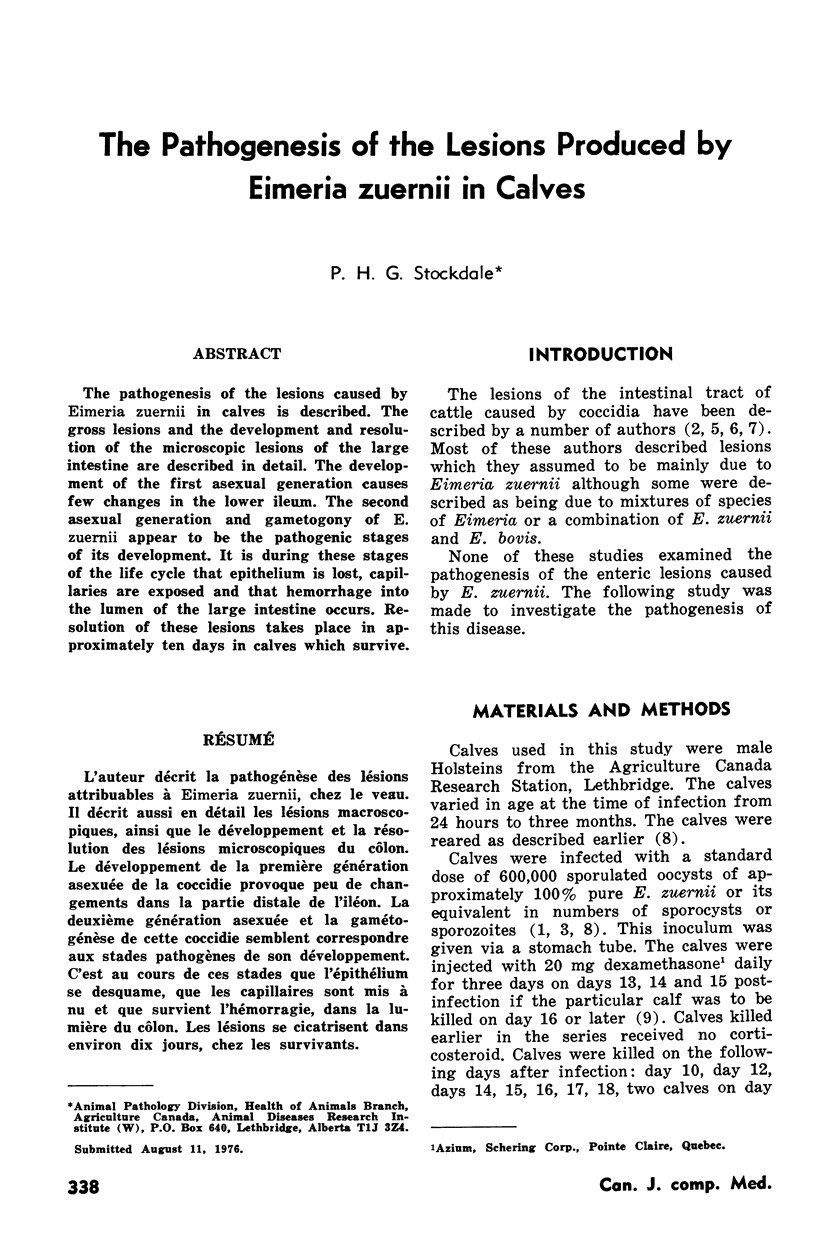
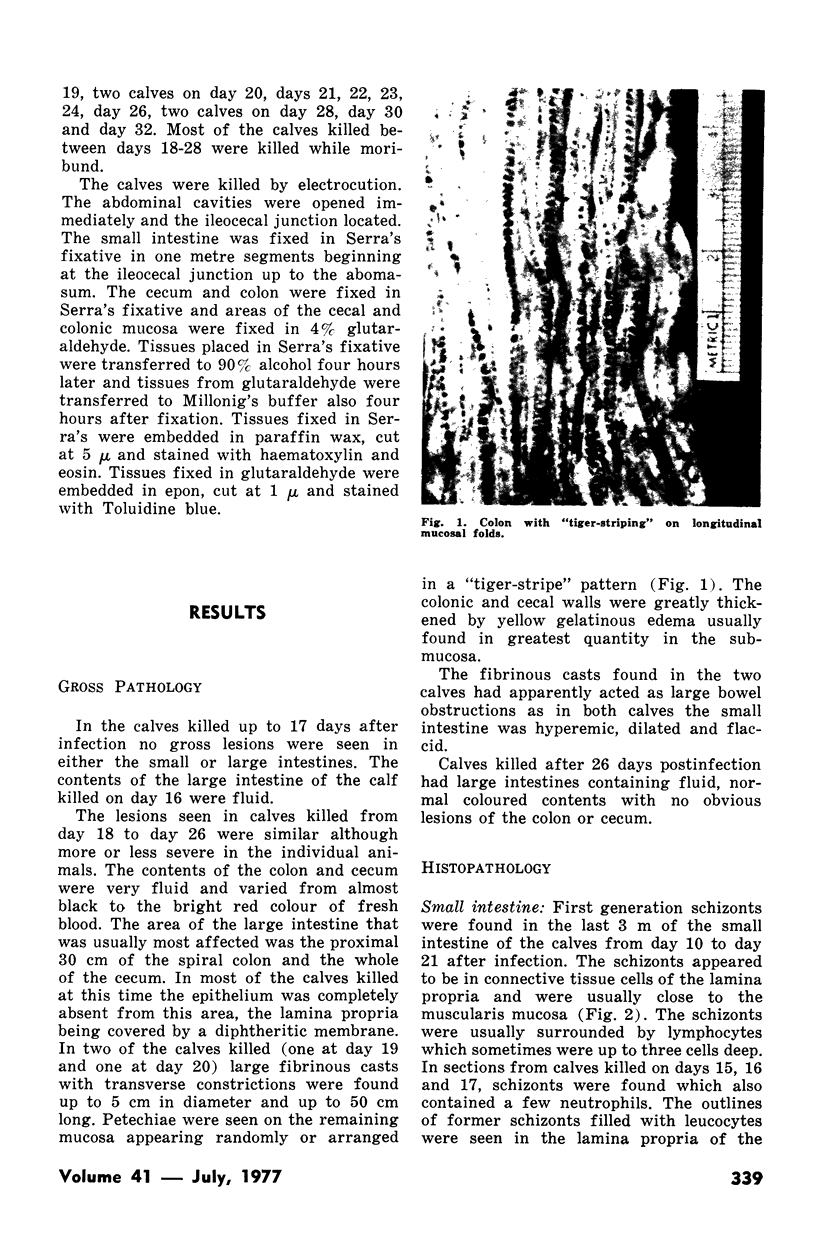
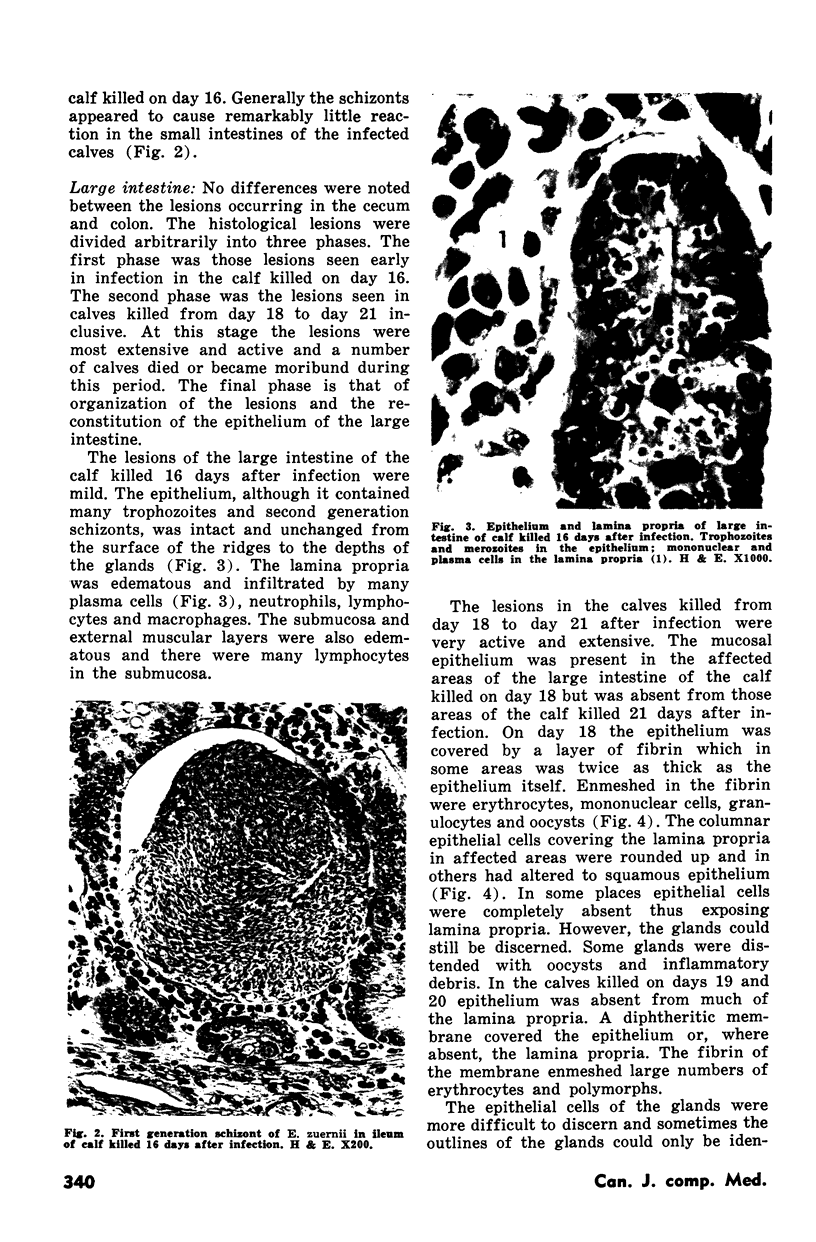
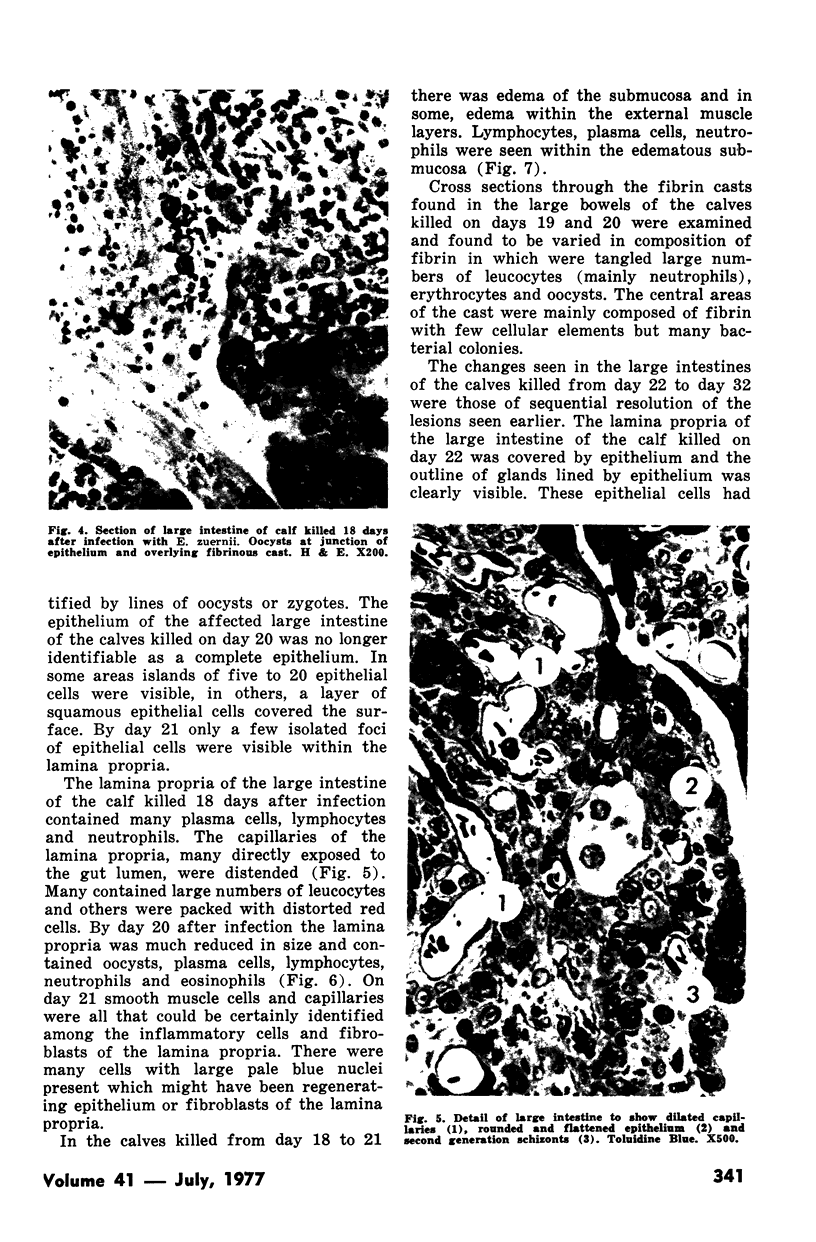
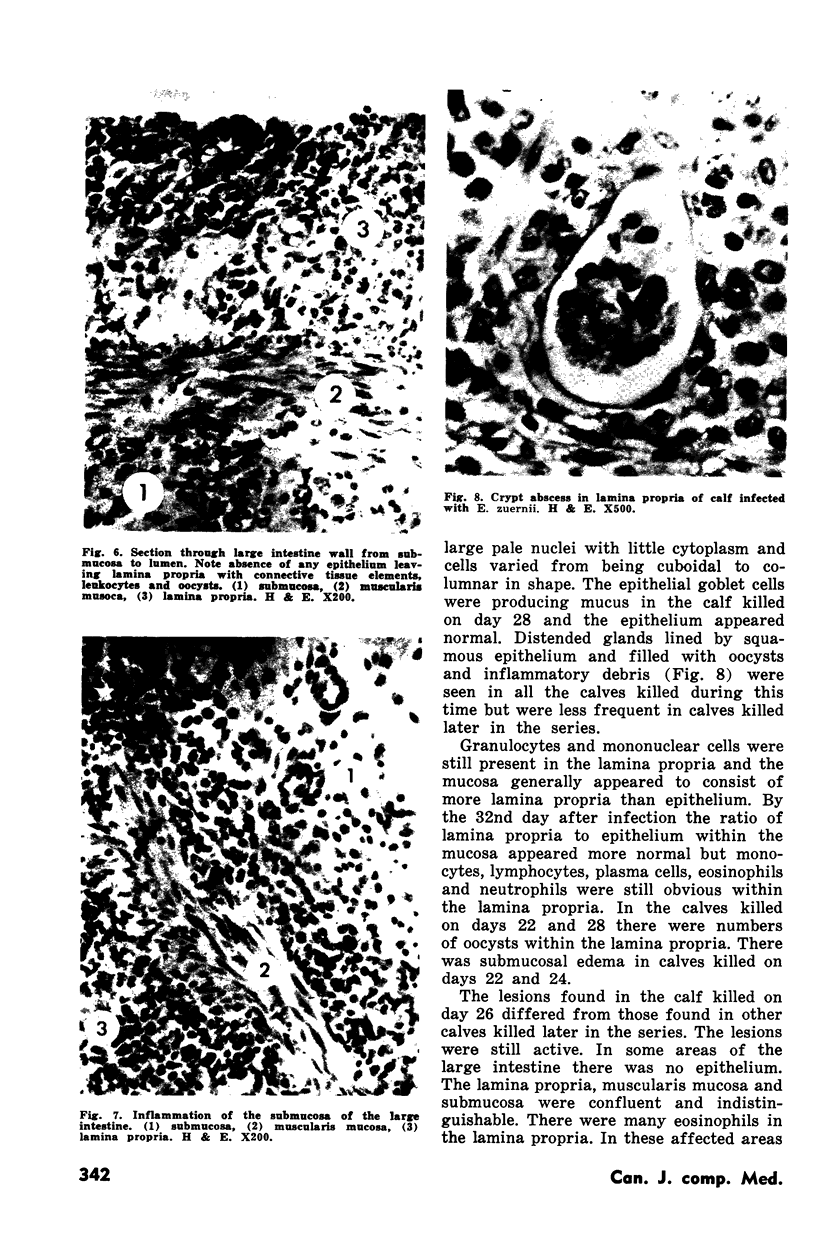
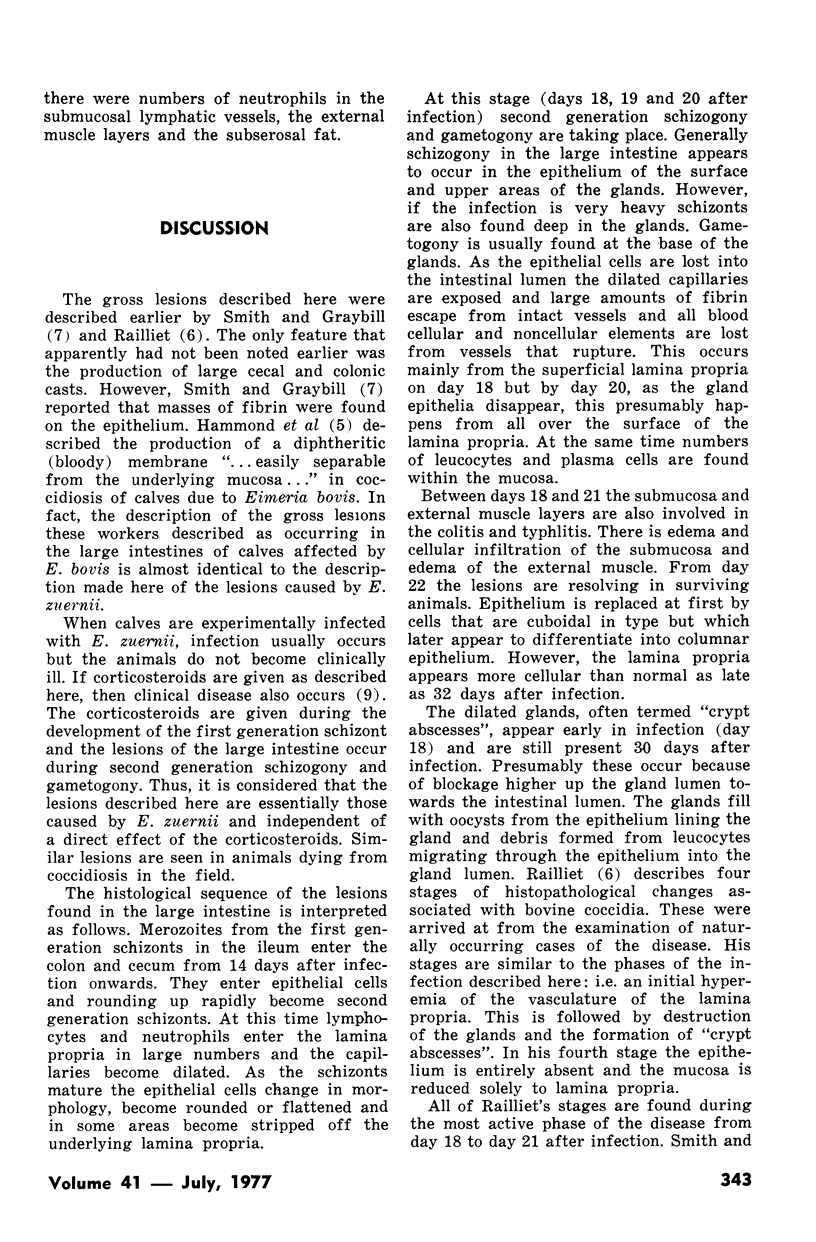
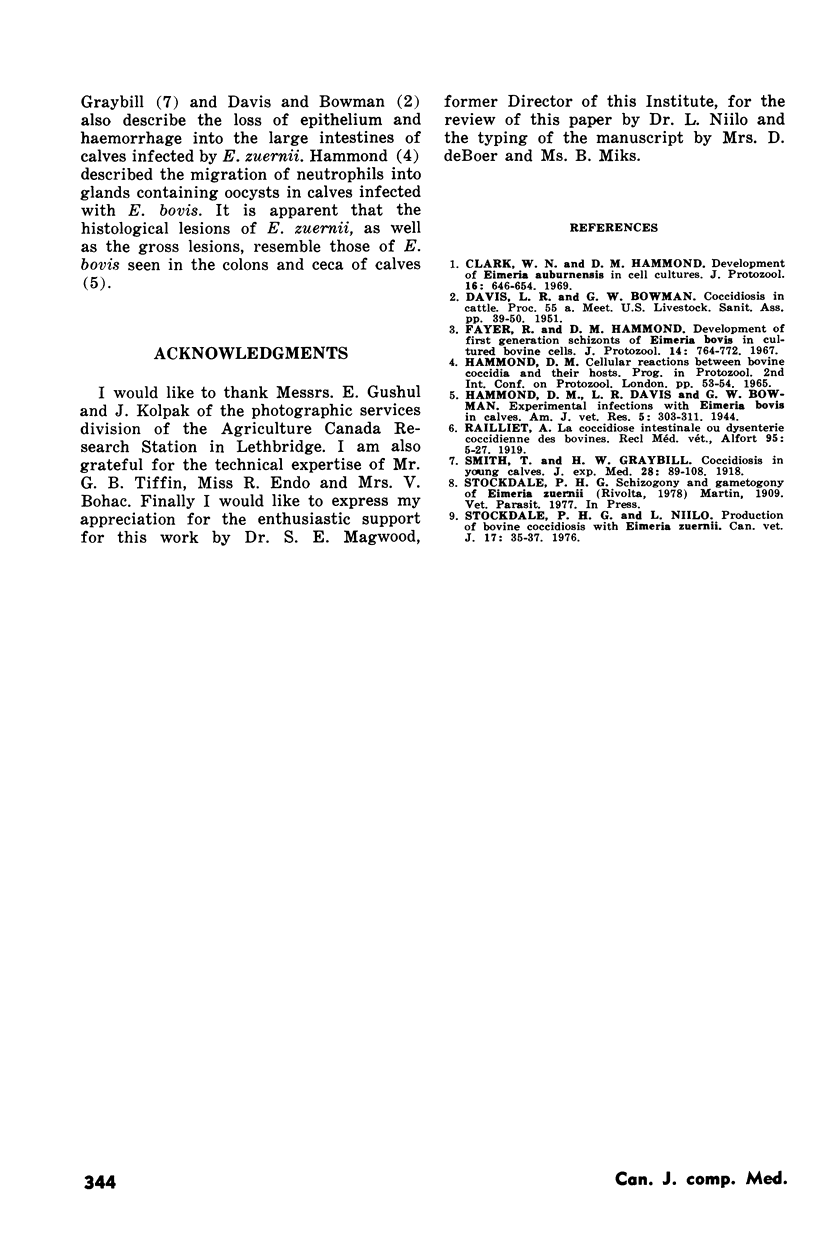
Images in this article
Selected References
These references are in PubMed. This may not be the complete list of references from this article.
- Clark W. N., Hammond D. M. Development of Eimeria auburnensis in cell cultures. J Protozool. 1969 Nov;16(4):646–654. doi: 10.1111/j.1550-7408.1969.tb02323.x. [DOI] [PubMed] [Google Scholar]
- Fayer R., Hammond D. M. Development of first-generation schizonts of Eimeria bovis in cultured bovine cells. J Protozool. 1967 Nov;14(4):764–772. doi: 10.1111/j.1550-7408.1967.tb02076.x. [DOI] [PubMed] [Google Scholar]
- Stockdale P. H., Niilo L. Production of bovine coccidiosis with Eimeria zuernii. Can Vet J. 1976 Feb;17(2):35–37. [PMC free article] [PubMed] [Google Scholar]



